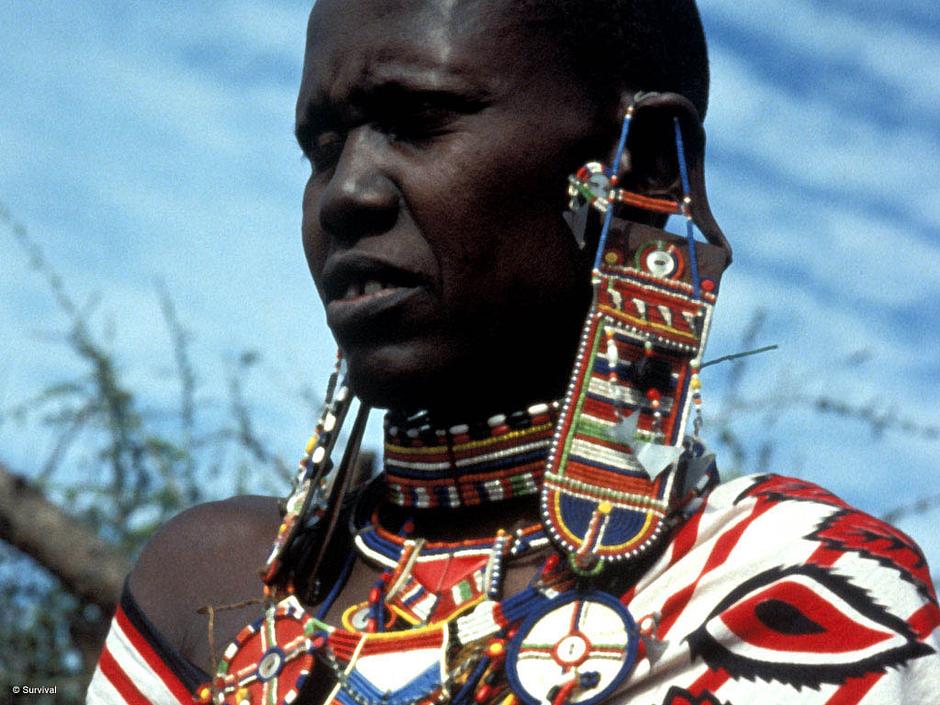Too many Africans?
 © Photo: ©John Cairns/ Creative Commons.
© Photo: ©John Cairns/ Creative Commons.By Stephen Corry
“What are all these famines in Ethiopia? What are they about? They’re about too many people for too little land. That’s what it’s about.”
Sir David Attenborough
The cry that the world is overpopulated is more than two hundred years old, from a period when perhaps a billion people stood on the planet. There are now nearly eight times as many and it’s become normal to blame them – us – for the ills which beset “nature.” There are just too many of us, and we’re using up too many of the world’s resources. But how true is this really? And, what should be done about it?
A series of very different numbers are needed to point to a sensible answer. The first obviously is the number of people alive in any specific region at any time. This number is, equally obviously, changing every minute as babies are born and older people die, so the second important factor is the rate at which the overall population number is growing. That’s the basis for all forecasts. Sticking with these two numbers for the moment, there’s already a surprise: The world’s population is indeed increasing, but the rate of population growth has actually been falling since the 1970s. Not only that, but the fertility rate has been decreasing too. In the Global North, the richer countries (let’s call them the “North” as shorthand), it’s now below “replacement level,” as it is in nearly half the world’s countries. If that half were cut off from the rest of the world, the population there would be shrinking. This would bring problems for them fairly quickly because there wouldn’t be enough working people to look after those not able to look after themselves, but leave that aside.
That’s not actually happening because the North’s overall population isn’t getting smaller, it’s growing, albeit slowly (at a rate of 0.7% in North America and 0.2% in the EU). That’s because people are coming in from the Global South (the “South”), the poorer countries. So, it turns out that the North – by itself – doesn’t have any more of an overpopulation problem than it has done for the last couple of generations. But rates of population growth in the South are higher than in the North and above replacement levels. Overall population numbers there are growing, so if there really is an overpopulation problem, we have to look for it in the South, which is what most environmentalists mean when they blame “overpopulation.”
Let’s bring in another factor, population density, which is the number of people per square kilometre. Taking just sub-Saharan Africa (Africa is the region with the highest fertility, so is the key example), the rate of population growth is high (2.7%) but the population density is actually very low. In fact, in every one hundred km sided square, there are half a million people in Africa compared to well over four million in England. So, Africa does not have anything like the overpopulation problem that England has. Obviously, if its population continues to grow at the same rate as now, there would be overpopulation at some time in the future, and equally obviously to those who have experienced it, the overcrowding in big African cities is shocking.
Why is the rate of population increase very low in the North but high in the South? There are many probable factors, but one thing appears to be generally true: The rate drops when standards of living rise. Individuals have children for many reasons of course but some basic principles seem to apply, people with high living standards generally feel more secure and so less reliant on a large family to care for them in infirmity or old age and they think it less likely that their children will die in infancy. Whatever the reasons – and incidentally any idea that African women don’t already know how to limit fertility is pretty silly and racist – well-off people have fewer children on average than poor ones. So while it’s true that the sub-Saharan African population is increasing quickly, it’s into an area of the world which is much less populated than the Global North.
Let’s introduce a further factor, how much people consume. This is crucial because population only becomes a problem if it’s higher than a territory can provide for without wrecking its environment. “Consumption” obviously includes far more than just what people eat, and perhaps the most important thing is how much energy is needed to produce their food, housing, transport and everything else they consume. This isn’t straightforward. To take a simple example, someone might drive an ancient and inefficient car which uses lots of polluting fuel but if they keep it for decades and never travel very far, they might use less energy, and produce less pollution, than an electric car which is frequently traded in for a newer model. The same energy goes on making a new car as running an old one for several years, and the energy needed to propel both is very broadly the same, whether the fuel comes from an onboard tank or is drawn from a power station. Of course, there are thousands of variables, but the basic point is that the more people consume, the more impact they have on the environment. There isn’t a good way to measure this, but to get some inkling we can turn to the common measure for wealth, Gross Domestic Product (GDP). To put it simply, people from countries with a high GDP are likely, as a broad assumption, to consume comparatively more than those with a low GDP.
Applying this to our example of sub-Saharan Africa, we find that the average American’s GDP is about forty times higher than that of an average African. So, Africa’s population is indeed growing quickly, that’s true, but it’s thinly populated and its consumption per head is extremely low. Whatever their aspirations, many people there never get on a plane or travel by private car, they don’t get a new washing machine or TV every couple of years, they don’t use much electricity or fossil fuel, and they tend not to throw away vast amounts of food daily.
The conclusion must be that if overpopulation is a problem because it strains the world’s resources, then the first and most efficient way to address it is not in Africa at all, it’s to reduce consumption in the North, which currently uses far more than its share of resources. Secondarily, if rates of population growth continue to fall when standards of living go up, then the easiest way of addressing that – inside Africa – would likely be to stop the massive resource outflow from the continent, and ensure more of its vast natural wealth remains with and starts fairly benefiting its natural owners.
In other words, to address “overpopulation,” the richer countries must do two things – consume less and stop stealing Africa’s resources. Both imply less for the Global North, and of course that’s the real problem with my simplified explanation. It suggests that a solution to overpopulation and the overuse of scarce resources is nothing to do with reducing the number of Africans, but simply for there to be a more level playing field between them and those of us in the North who take and consume their wealth. But as the environmental movement and its anxiety about overpopulation comes mainly from the same place, the richer countries, it’s always going to be easier and more satisfying to pin the blame on too many poor Africans and to keep a blind eye on the main culprit – in the mirror. The fact that the one blamed is mainly Black, and the one blaming is mainly white should not escape attention!
And the famines in Ethiopia referred to by Attenborough? They have actually been going on for centuries, from when the country had far fewer people. The well-publicised ones in the 1980s – which gave us the catchy and inane, “Do they know it’s Christmas?” – were largely created by abusive government policies, land and resource theft, and war. In 1984, the BBC movingly described the famine as “biblical,” which might have alerted Attenborough and others to something of the history.
Can we stop blaming overpopulation on too many Africans?






